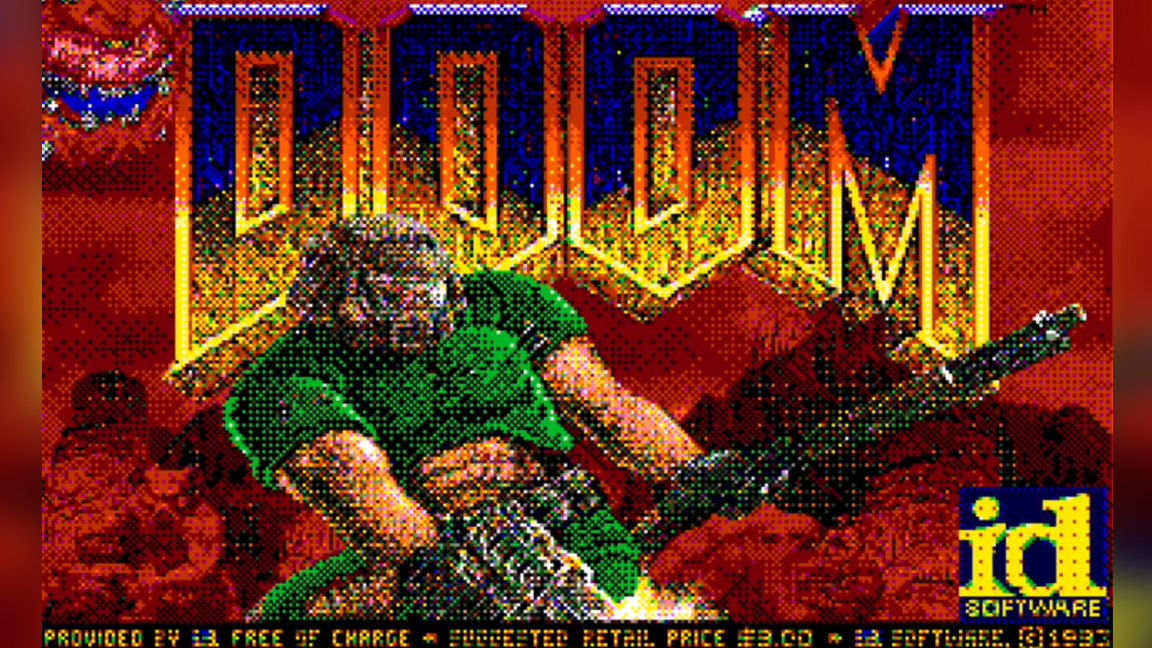Doom slithers and dithers its way with a 16-color Atari ST port
The Atari ST has been 'doomed' in glorious 16-colors!

We've come to accept over the years that we will never stop finding new platforms on which the venerable FPS Doom can be run. There will always be another system ready to take us to the depths of hell whether it's a keycap or an air hockey table. Today, however, maker and developer Jonas Eschenburg has decided to bring the classic title to the beloved classic console known as the Atari ST. The project's name, STDOOM may be unremarkable, but the work put into this project is truly remarkable.
Goodbye grayscale: DOOM on the Atari ST, now in 16 colors with a lot of dithering. Palette effects (screen going red when taking damage) supported as well. pic.twitter.com/zb6QFiwN7rApril 27, 2025
Part of the fun of Doom ports like these is wrapping your head around its limitations. Sacrifices have to be made when it comes to the quality of output from these emulations and this project is no exception. In this case, the Atari ST has its own specs that push the boundaries of what's necessary to be able to play Doom. The end result is a heavily dithered experience comprised of a total of 16 colors.
Despite the color limitations, the game itself looks quite playable. In addition to the pixelated output, Eschenburg confirms the game also supports what's known as palette effects. This means that the screen illuminates in bright red every time you take damage. It's the little things like this that kick the experience up a notch.
You'll still need your own copy of Doom to run this on your Atari ST. But you can pickup a legal copy of Doom from many online stores. Should you wish to just try it out, then you can also use the shareware demo version. There is one issue though. According to the GitHub readme, the code only compiles on a Linux system. The DOS code version has a copyrighted sound library which prevents its use.
If you're not familiar with the system, the Atari ST is a home computer first released in June of 1985 making it nearly 40 years old. The Atari ST is a distant cousin of the Commodore Amiga 500 with an intertwined history of development. It relies on a Motorola 68000 8MHz processor and can output graphics with 16 individual colors with a resolution of 320 x 200px. If using a monochrome monitor, this resolution could double to 640 x 400px.
Speaking of Commodore systems, you might appreciate the recent release of Commodore OS Vision 3.0. This Linux-based OS aims to recreate the look and feel of computing on old Commodore systems and comes with a handful of cool new features like a Basic editor as well as tons of free retro and retro-inspired games.
Follow Tom's Hardware on Google News to get our up-to-date news, analysis, and reviews in your feeds. Make sure to click the Follow button.
Get Tom's Hardware's best news and in-depth reviews, straight to your inbox.

Ash Hill is a contributing writer for Tom's Hardware with a wealth of experience in the hobby electronics, 3D printing and PCs. She manages the Pi projects of the month and much of our daily Raspberry Pi reporting while also finding the best coupons and deals on all tech.
-
Findecanor But ... which CPU would you need to upgrade it to make it run at a near-acceptable frame rate?Reply
A 8 MHz 68000 that the ST came with stock is relatively slow.
There has been a port to the Atari Falcon 030 back in 030. It took advantage of chunky video modes.
Otherwise, the classic 16-colour Atari ST (and STe) suffers from the same limitation as the Amiga: bitplane graphics, which makes drawing a single pixel column at a time very slow.
The common approach is to draw into a "chunky" pixel buffer and then do a chunky-to-planar pass. That pass could take half the CPU time. On the Amiga, there are techniques for using the Blitter to speed that up a little, but the stock ST does not have one, and I'm not sure that the STe's blitter could be used for that. -
Pierce2623 So advanced that in ‘85 they were already on 16:10 when everyone else was 4:3. They skipped right over the 16:9 era.Reply -
Stesmi Reply
Hah, nope. Pixels were elongated. 4:3 screens.Pierce2623 said:So advanced that in ‘85 they were already on 16:10 when everyone else was 4:3. They skipped right over the 16:9 era. -
PiersPlowman Reply
*Wrong. Both low (320x200) and High (640x400) resolutions used square pixels; the resulting output was a letterboxed display.Stesmi said:Hah, nope. Pixels were elongated. 4:3 screens.
Medium resolution (640x200) was the oddball.
(Source: I own a 1040 STe)
....
EDIT: I clicked on the X link and read the comments. Doom is NOT running on a stock ST - it is running on an emulated ST with 14 megabytes of RAM at an unspecified accelerated speed. Sure, you could by '030 accelerator boards for the ST with their own RAM, but they were far from commonplace, so until Eschenburg gets Doom running on an 8 MHz 68000 with 4 megs or RAM or less, I'm calling BS on this.
Tom's should amend the headline to reflect that Eschenburg is running Doom on a phantom Atari ST. -
Findecanor Reply
On most 8- and 16-bit computers and video games -- which output to analogue TV signals, pixels were never perfectly square like they are on VGA monitors.PiersPlowman said:*Wrong. Both low (320x200) and High (640x400) resolutions used square pixels; the resulting output was a letterboxed display.
Hardware was often made with the pixel clock in sync with the clock of the chroma signal in a composite signal so as to avoid colour artifacts on TV.s This was used to clock the video chip, and was often multiplied all the way up to the CPU's clock: thus making the CPU run at slightly different speeds in NTSC and PAL territories.
I think each NTSC pixel is slightly higher than it is wide, and the other way around for PAL (which has higher vertical resolution).
Computer monitor for these signals however, often had knobs that you could turn to stretch the image as well, and people did turn them to make the image fill the screen. -
PiersPlowman Reply
That may be the case for systems that used composite output exclusively, but I always used the computer using the component RGB output, and the pixels were not noticeably rectangular, medium resolution excepted.Findecanor said:On most 8- and 16-bit computers and video games -- which output to analogue TV signals, pixels were never perfectly square like they are on VGA monitors.
Hardware was often made with the pixel clock in sync with the clock of the chroma signal in a composite signal so as to avoid colour artifacts on TV.s This was used to clock the video chip, and was often multiplied all the way up to the CPU's clock: thus making the CPU run at slightly different speeds in NTSC and PAL territories.
I think each NTSC pixel is slightly higher than it is wide, and the other way around for PAL (which has higher vertical resolution).
Computer monitor for these signals however, often had knobs that you could turn to stretch the image as well, and people did turn them to make the image fill the screen.
To the best of my knowledge, an unmodified ST ran at 8 MHz wherever it was sourced, PAL or NTSC. It could, coupled to the right display, do PAL 60.
You are right you are right that you could stretch the display - in fact, PAL 60 did just that and you had to adjust the display to compensate. BUT... it did not elongate the pixels; PAL 60 increased the gap between scanlines (until you corrected for this). -
Pierce2623 Reply
I know man. It’s a joke because the render resolution is 16:10 and people recently started LOVING 16:10 laptops displays instead of 16:9 over the last few years.Stesmi said:Hah, nope. Pixels were elongated. 4:3 screens.